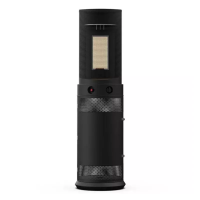Mimosa Backhaul Help Content
Mimosa Backhaul Performance
Copyright © 2014 Mimosa Page 26
Quality of Service (QoS) Support
Mimosa backhaul radios support four different L2/L3 QoS queues for traffic prioritization. Typically, an upstream
router sets values for CoS (L2), or DSCP/TOS (L3) for specific traffic on the post-routing chain. After packets leave
the router, they enter the radio where the traffic is queued and sent according to the packet marking. While the
radio does not function as a router, it does respect packet markings assigned by the upstream router.
The table below lists the four QoS queues and corresponding prioritization values for various traffic marking
standards.
Traffic Queue
IEEE P802.1p
(VLAN CoS Priority)
TOS DSCP
Mimosa Weighting
(% of capacity)
BE 0 0-31 0-7 20
BK 1 32-63 8-15 10
BK 2 64-95 16-23 10
BE 3 96-127 24-31 20
VI 4 128-159 32-39 30
VI 5 160-191 40-47 30
VO 6 192-223 48-55 40
VO 7 224-255 56-63 40
where,
BK = Background (lowest priority)
BE = Best Effort
VI = Video
VO = Voice (highest priority)
Mimosa QoS Weighting
Mimosa radios dynamically allocate link capacity by expanding or contracting each traffic queue based on the
current mix of marked traffic. If there is no traffic in a particular queue, that capacity is divided between the other
queues according to their relative weights. Unmarked traffic is processed in the Best Effort (BE) queue by default.

